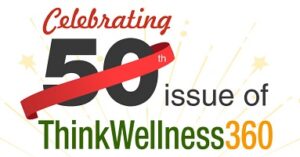
Exercise is a ‘must-do’ today — to keeping up with a healthy lifestyle — owing to our sedentary lifestyle. We all are aware of the plethora of benefits imparted to the mind, body, as also physiology, by the regular practice of physical exercise.
The paradox is many folks think of exercise as a fad. Also, on the other hand, when exercise is improperly done, or overdone, among enthusiasts, it is possible for some detrimental effects to come along with it — they are, usually, vague pains in certain parts of the body, muscle sprain, strain, or cramps, nerve pull, fatigue, and irritability, among others. All this is common when a new course of exercises is embarked upon. It is, therefore, necessary to take appropriate guidance from a trainer and also evaluate one’s health status, from time to time, with a medical doctor.
Ayurveda focuses foremost on prevention of illness, while emphasising on a daily regimen of exercise. Agreed that exercises have been a part of life since ages. In this context, it is noteworthy to mention that physical exercises and mental exercises should be kept apart. ‘Physical exercises’ are clearly described as chestaa — or ‘to try,’ for example, repetitive planned movements, lifting weights and so on, where there is an effort involved in carrying out that activity.
The other ‘physical movements’ are kriya — or, ‘actions,’ which we do without much participation, such as walking, or moving around doing our work. So, when one says that they cover a certain number of steps in a day — when it is ‘spaced out’ from walking as exercise — or, that they do all the domestic chores, please understand that such an excursion is part of everyday action, and not necessarily exercise.
Exercise, or vyayama, is defined in Charaka Samhita as physical activity that helps to build the body and improves physical strength — this is ‘physical exercise.’ Acharya Suśruta, the father of ancient Indian surgery, defines exercise as an activity that causes physical exhaustion.
An important factor to understand, while taking up exercise, is to know when to stop. In Ayurveda, this is described as half the actual capability of a person. When one starts deep and forceful exhalation, panting, or gasping, and excessive and continuous perspiration in the underarms, forehead, nose, arms and joints, while exercising, one ought to understand the whole gamut as the break-, or end-point. It is also necessary to take a break and once refreshed continue with the exercise. By doing so, one can prevent strain on the heart and maintain the vitals.
How much and how long to do exercises — this is subjective. It should be so much that benefits are acquired from doing exercise without any deleterious effects. With constant practice, one can gradually develop stamina and lengthen the duration, or time, of exercise.
What kind of exercises one must choose to practice? It all depends on various factors, like age, place, season, profession of the person, body composition, strength, flexibility and requirement. A few other rules to remember, during exercise, are to stay well hydrated, balance the electrolytes and follow proper nutrition, while avoiding crash diets and making dietary changes with professional guidance — so as to avoid nutritional deficiencies that could, again, encumber one’s proficiency with and for exercise.

